When William Henry Fox Talbot began experimenting with salt paper prints in the 1830s, some of the first images he produced were of plants – among them a delicate ‘melancholy gentleman’ (Astrantia major) in 1838, its four small flower heads craning outwards, held tight by a leafy collar of bracts. Its ghostly photographic shadow, cast in negative on to photo-sensitive paper, can be found in facsimile in the low light of the Dulwich Picture Gallery, nestled beside other long-dead leaves, flowers and fruits preserved in print. Fox Talbot was a keen botanist, and plants made excellent early photographic subjects – readily available, free and (relatively) inanimate, with beautiful, intricate forms. Perhaps he also liked the symbolism of photographing a plant designed, like his paper, to capture and transform light. He was one of the first in a long line of flora-loving photographers featured in ‘Unearthed: Photography’s Roots’, an exhibition that tells the story of photography while also serving as an unabashed paean to plants.
‘Unearthed’ begins not with a photograph but with a flower painting from the permanent collection at Dulwich by the 18th-century Dutch artist Jan van Huysum. It’s a luxuriously detailed rendition of a bouquet (Van Huysum often painted an impossible mash-up of different seasonal blooms), complete with dewdrops and intrepid ants cresting a tulip stem. ‘Only a few years after photography’s invention, artists began to emulate the artworks of the past,’ the painting’s caption explains, with extravagant still lifes by Fox Talbot and Roger Fenton making the point in the first room of the exhibition, which is dedicated to ‘Victorian Pioneers’. But it’s the contemporary photography encountered at the end of this chronological display that most clearly embraces the genre’s delicious combination of detail and artifice. Richard Learoyd’s Large Poppies (2019), made with a walk-in camera to produce an extremely sharp image, depicts a bouquet in all its decaying glory, each straggly stamen and ruffled petal picked out in opulent hues. Ori Gersht’s film On Reflection (2014) literally shatters artistic illusions, showing an arrangement of convincing yet fake flowers that eventually breaks into dozens of tinkling digital shards.
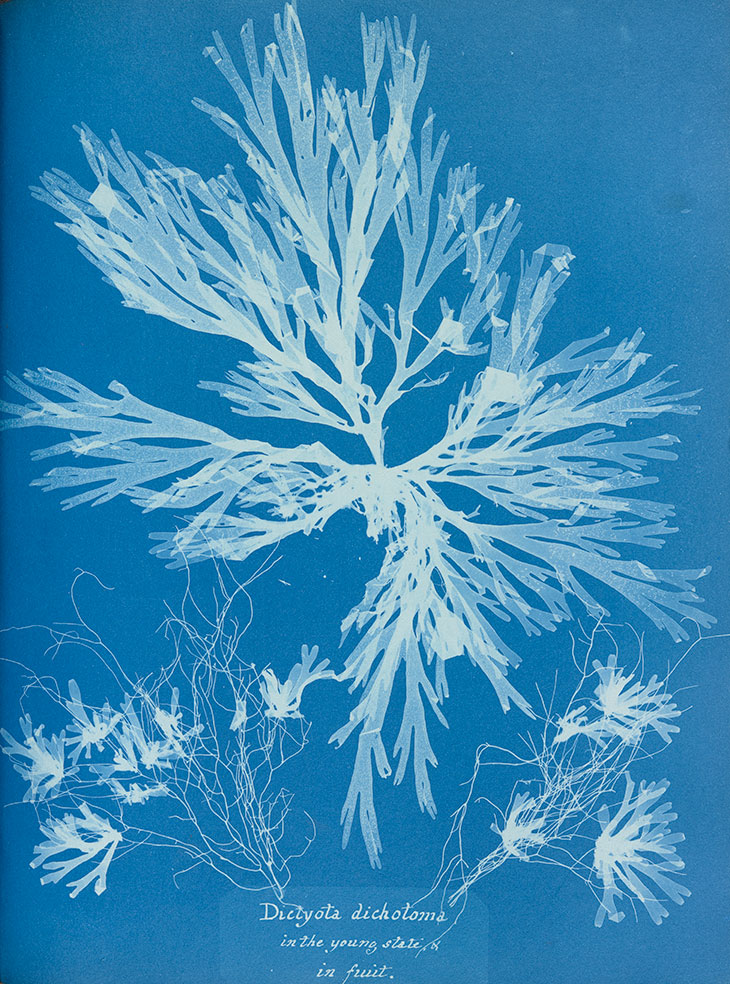
‘Plate 55 – Dictyota dichotoma, on the young state and in fruit’, from Photographs of British Algae: Cyanotype Impressions, Vol. 1 (Part 1) (1853), Anna Atkins. Photo: © Horniman Museum and Gardens
This makes for a nice link with the permanent collection, but other visual influences are just as apparent in the show – scientific illustration in particular. Many of the photographs depict specimens carefully selected, recorded and classified by camera-wielding botanists in the UK and overseas (some on colonial exploits). Their works, which generally depict single plants against neutral backgrounds, have an altogether different sort of beauty. Cecilia Glaisher’s unpublished and previously unshown albumen prints of British ferns show off their delicate tracery in simple silhouette; they were made during a Victorian ‘fern craze’ to which many of us, confined indoors with our houseplants this year, can surely relate. Anna Atkins’ cyanotype impressions of British algae seem startlingly modern, too: pale, fragile fronds drifting in a brilliant blue haze. Atkins was an accomplished scientific illustrator, and an example of the hand-drawn studies that preceded the emergence of botanical photographs might have helped put these extraordinary images into context.
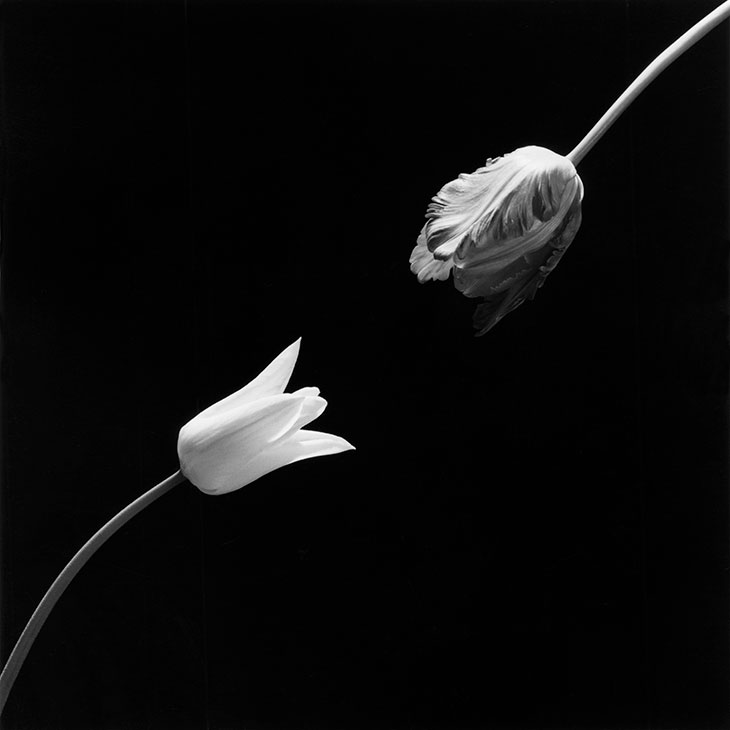
Tulip (1984), Robert Mapplethorpe. © Robert Mapplethorpe Foundation; used by permission
But to tend to all the artistic roots and offshoots of this exhibition would be an impossible task. Its strength is in its variety, and the methods, styles, references and motivations of the photographers are as plentiful as the plants themselves. Artists of all camps found inspiration in flowers, and saw in them an opportunity to cultivate distinct individual styles. In Japan, Kazumasa Ogawa learned from his country’s woodblock printing tradition to create colourised photographs of unprecedented quality. His Morning Glory (c. 1894) has a striking, collage-like quality, with splashes of deep red and soft green picked out against a pale grey background. In the 20th century, Hungarian-born André Kertész used Surrealist distortion to infuse his work with emotion; his Melancholic Tulip (1939) droops dismally towards the floor as Europe plunges into another long conflict. Robert Mapplethorpe, by contrast, delights in the flower’s sensual symbolism, as his Tulip of 1984 stretches across an inky black void towards a fellow flower. In a stunning series of photographs, the ironwork designer and sculptor Karl Blossfeldt zooms in on structures of the natural world. Twisting tendrils and tightly curled young ferns are transfigured by the camera into decorative iron railings; humble grasses into the marble mouldings on a classical frieze; all powerful reminders of just how much our cultural constructions owe to nature’s old designs.
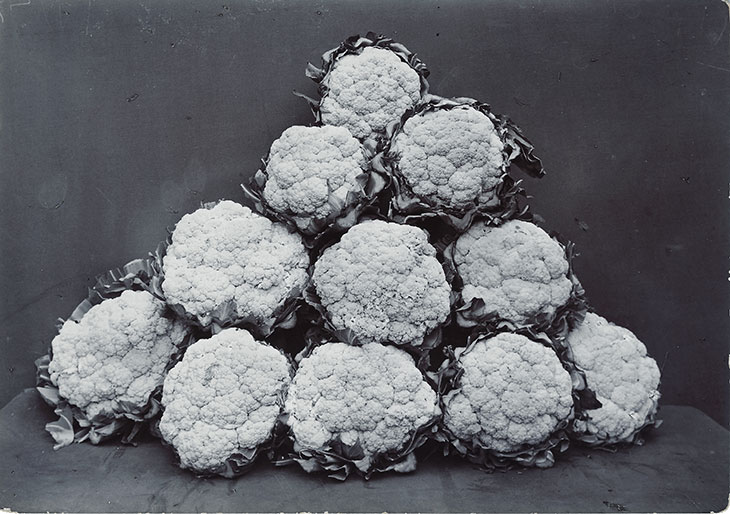
Broccoli Leamington (c. 1895–1910), Charles Jones. Courtesy Sean Sexton. Photo: © Dulwich Picture Gallery
This is a wildflower meadow of an exhibition: an invigorating medley of colourful and competing ideas. But at the root of every image is the simple, enduring fascination with plants – delicate and strong, colourful and sculptural, useful and beautiful, familiar and unfathomable – that a great many of us share. It seems significant that some of the most memorable works on display were created by a professional gardener. Charles Jones probably took his photographs of flowers, fruit and vegetables while working at Ote Hall, Sussex, between 1895 and 1910. He never published, exhibited or explained them, but he clearly put great care into each and every one. Through his lens, humble stacks of broccoli, cucumbers and potatoes acquire monumental gravitas, skilfully framed and lovingly captured in rich, earthy tones. They may be well over a century old, but they are as fresh as ever.
Dulwich Picture Gallery, London, is temporarily closed to the public due to Covid-19 restrictions. For more information on ‘Unearthed: Photography’s Roots’ (scheduled to run until 9 May) visit the institution’s website.
Unlimited access from just $16 every 3 months
Subscribe to get unlimited and exclusive access to the top art stories, interviews and exhibition reviews.

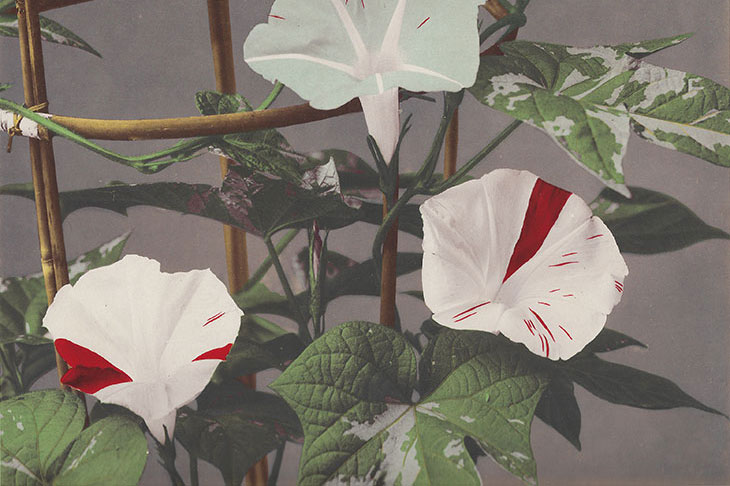
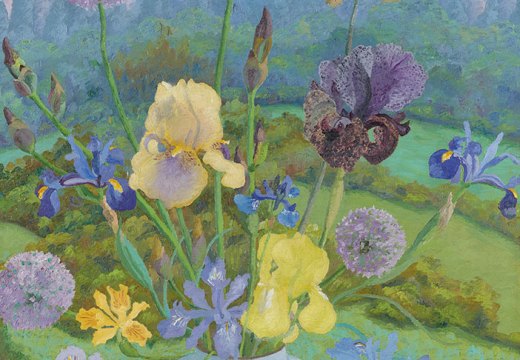

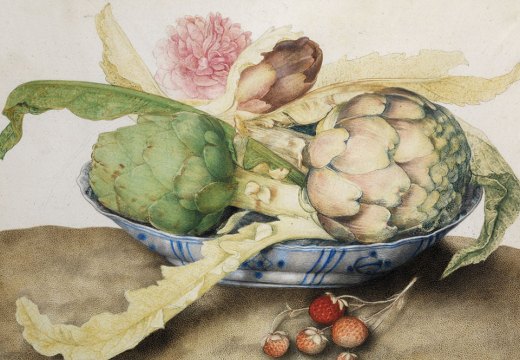









![Masterpiece [Re]discovery 2022. Photo: Ben Fisher Photography, courtesy of Masterpiece London](http://www.apollo-magazine.com/wp-content/uploads/2022/07/MPL2022_4263.jpg)
It’s time for the government of London to return to its rightful home